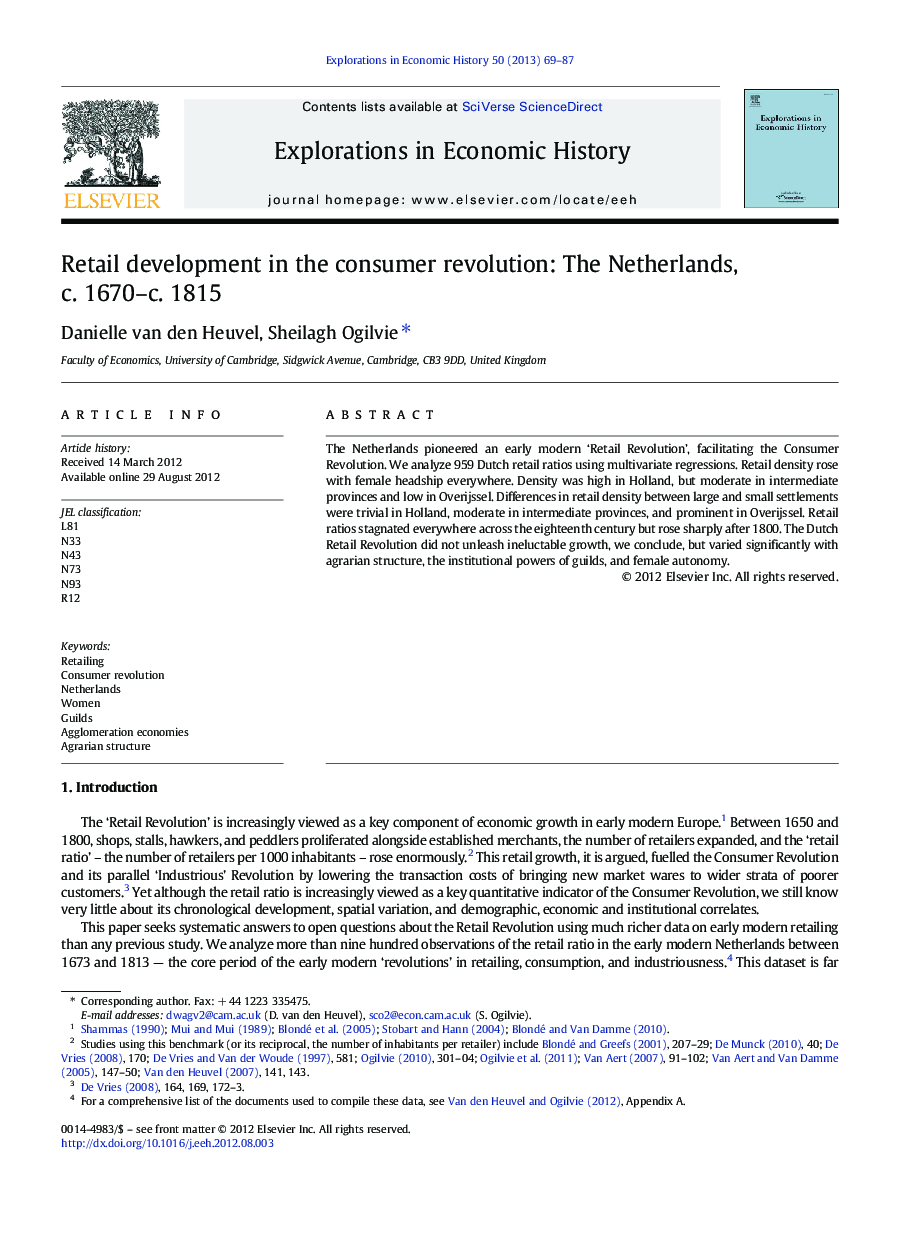| Article ID | Journal | Published Year | Pages | File Type |
|---|---|---|---|---|
| 5068955 | Explorations in Economic History | 2013 | 19 Pages |
The Netherlands pioneered an early modern 'Retail Revolution', facilitating the Consumer Revolution. We analyze 959 Dutch retail ratios using multivariate regressions. Retail density rose with female headship everywhere. Density was high in Holland, but moderate in intermediate provinces and low in Overijssel. Differences in retail density between large and small settlements were trivial in Holland, moderate in intermediate provinces, and prominent in Overijssel. Retail ratios stagnated everywhere across the eighteenth century but rose sharply after 1800. The Dutch Retail Revolution did not unleash ineluctable growth, we conclude, but varied significantly with agrarian structure, the institutional powers of guilds, and female autonomy.
⺠We analyze 959 observations of Dutch retail density from 1670 to 1813. ⺠We measure retail density in terms of subsidiary as well as main occupations. ⺠Dutch retail density differed significantly across provinces and time-periods. ⺠Women's autonomy, agrarian structure, and institutions affected retail density. ⺠These findings have implications for the Consumer Revolution.
